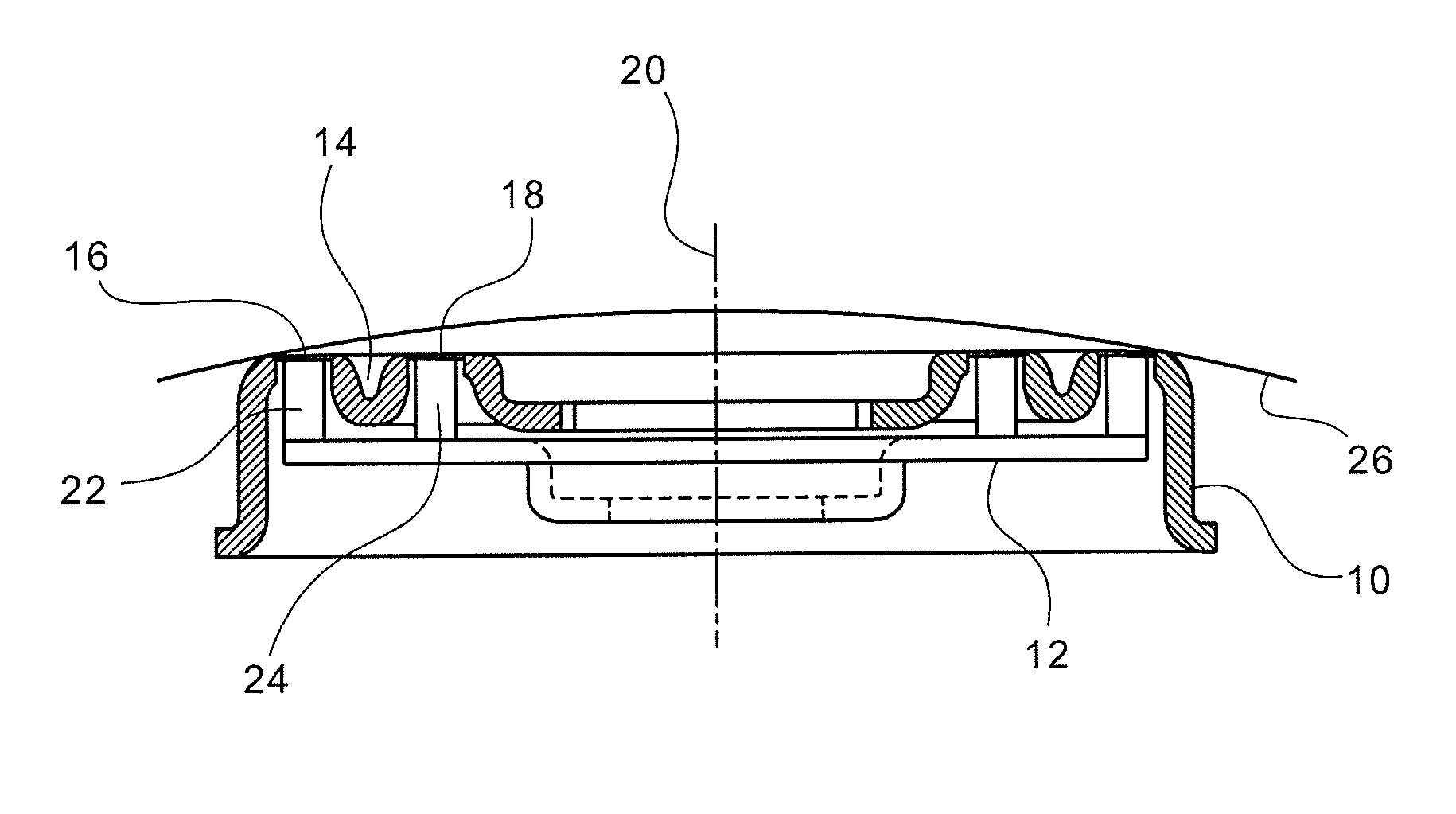Rotary electric shaver and manufacturing method of outer cutter and inner cutter of the same
a technology of electric shaver and manufacturing method, which is applied in the direction of metal working apparatus, etc., can solve the problems of poor machining efficiency, uneven skin surface, and increased chances of unshaved areas, so as to improve shaving efficiency, smooth shave the concave portion, and improve shaving efficiency
- Summary
- Abstract
- Description
- Claims
- Application Information
AI Technical Summary
Benefits of technology
Problems solved by technology
Method used
Image
Examples
first embodiment
[0034]Referring to FIG. 1, a main body 50 has a case 54 formed by curving an upper portion of a grip 52, which is approximately columnar, diagonally upward to the front. The case 54, which can be split into a front counterpart and a back counterpart, houses a chargeable battery, an electric motor, a control circuit board and the like (not shown). A power switch 56 is attached to the front surface of the case 54. A display (not shown) composed of LED lamps indicating the amount of remaining charge of the battery, an operation status and the like is located under the switch 56. The display can be seen from outside through a translucent portion 54A of the case 54.
[0035]A head unit 58 is openably and detachably attached to an upper portion of the case 54. The head unit 58 is inclined relative to the grip 52 of the case 54 such that the shaving sections (the upper surface of a cutter frame 60, which will hereinafter be described in detail) are directed diagonally upward to the front. The...
PUM
| Property | Measurement | Unit |
|---|---|---|
| heights | aaaaa | aaaaa |
| area | aaaaa | aaaaa |
| areas | aaaaa | aaaaa |
Abstract
Description
Claims
Application Information
 Login to View More
Login to View More - R&D
- Intellectual Property
- Life Sciences
- Materials
- Tech Scout
- Unparalleled Data Quality
- Higher Quality Content
- 60% Fewer Hallucinations
Browse by: Latest US Patents, China's latest patents, Technical Efficacy Thesaurus, Application Domain, Technology Topic, Popular Technical Reports.
© 2025 PatSnap. All rights reserved.Legal|Privacy policy|Modern Slavery Act Transparency Statement|Sitemap|About US| Contact US: help@patsnap.com



